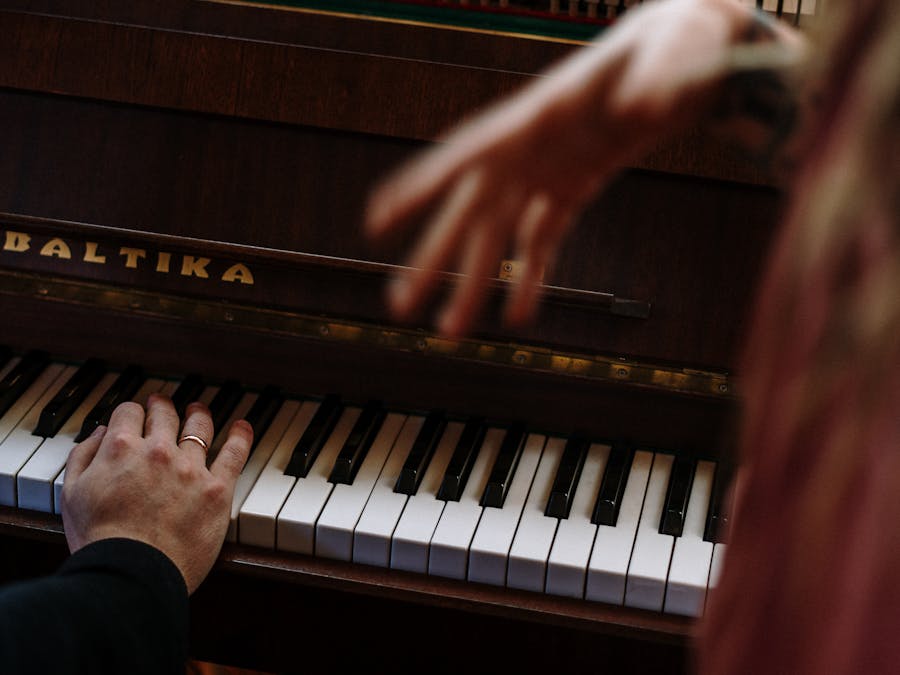 Piano Guidance
Piano Guidance
 Piano Guidance
Piano Guidance

 Photo: Mateus Souza
Photo: Mateus Souza
Tears and chills – or “tingles” – on hearing music are a physiological response which activates the parasympathetic nervous system, as well as the reward-related brain regions of the brain. Studies have shown that around 25% of the population experience this reaction to music.

Both of these piano brands offer great instruments and invest a lot in their quality. Much of your decision making is going to come down to the...
Read More »
The main differences between a piano and a keyboard are: A 'piano' is an acoustic instrument with weighted keys whereas a 'keyboard' is an electric...
Read More »Music has the power to tug at the heartstrings, and evoking emotion is the main purpose of music – whether it’s joy or sadness, excitement or meditation. A certain melody or line of a song, a falling phrase, the delayed gratification of a resolved harmony – all these factors make music interesting, exciting, calming, pleasurable and moving.Tears and chills – or “tingles” – on hearing music are a physiological response which activates the parasympathetic nervous system, as well as the reward-related brain regions of the brain. Studies have shown that around 25% of the population experience this reaction to music. But it’s much more than a pure physiological response. Classical music in particular steers a mysterious path through our senses, triggering unexpected and powerful emotional responses, which sometimes result in tears – and not just tears of sadness.Tears flow spontaneously in response to a release of tension, perhaps at the end of a particularly engrossing performance. Certain pieces of music can remind us of past events, experiences and people, triggering memories and associated emotions. At other times, we may feel tearfully awestruck in the face of the greatness or sheer beauty of the music.This last response has a name – Stendhal Syndrome – and while the syndrome is more commonly associated with art, it can be applied equally to the powerful emotional reaction which music provokes.A psychosomatic disorder, Stendhal Syndrome, or hyperkulturemia, causes rapid heartbeat, dizziness, sweating, disorientation, fainting, tears and confusion when someone is looking at artwork (or hearing a piece of music) with which he or she connects emotionally on a profound level. The phenomenon, also called ‘Florence Syndrome’, is named after the French author Marie-Henri Beyle , who wrote under the pen-name of ‘Stendhal’. While visiting the Basilica of Santa Croce in Florence, he became overcome with emotion and noted his reactions:“I was in a sort of ecstasy, from the idea of being in Florence, close to the great men whose tombs I had seen. Absorbed in the contemplation of sublime beauty … I reached the point where one encounters celestial sensations … Everything spoke so vividly to my soul.”While there is some debate as to whether the syndrome actually exists, there is no doubt that music (and art and literature) can have a very profound effect on our emotional responses.Certain pieces are well-known tear-jerkers, including:

5 feet and 9 inches 2. How tall is Mummy Pig? Peppa's mother, Mummy Pig, is most likely to be a 5'9” (5 feet and 9 inches), that means...
Read More »
Sergei Rachmaninov, the pianist with very big hands. Nov 13, 2018
Read More »
Many people are not aware that chipped ivory piano keys can be repaired. There is actually a product called AcryliKey that is made specifically for...
Read More »
Methods of Learning Piano The Suzuki Piano Method. This is one of the most celebrated methods of learning both piano and violin. ... The Alfred...
Read More »
For a student that is 6-8 years old, well, they can start putting in a little more time and start practicing regularly for 10-15 minutes per day....
Read More »
Pianoforall is one of the most popular online piano courses online and has helped over 450,000 students around the world achieve their dream of playing beautiful piano for over a decade.
Learn More »
The 'four chord song' has been around since Pachelbel's Canon around the turn of the 18th century. These four chords are the magic I, IV, V and vi....
Read More »